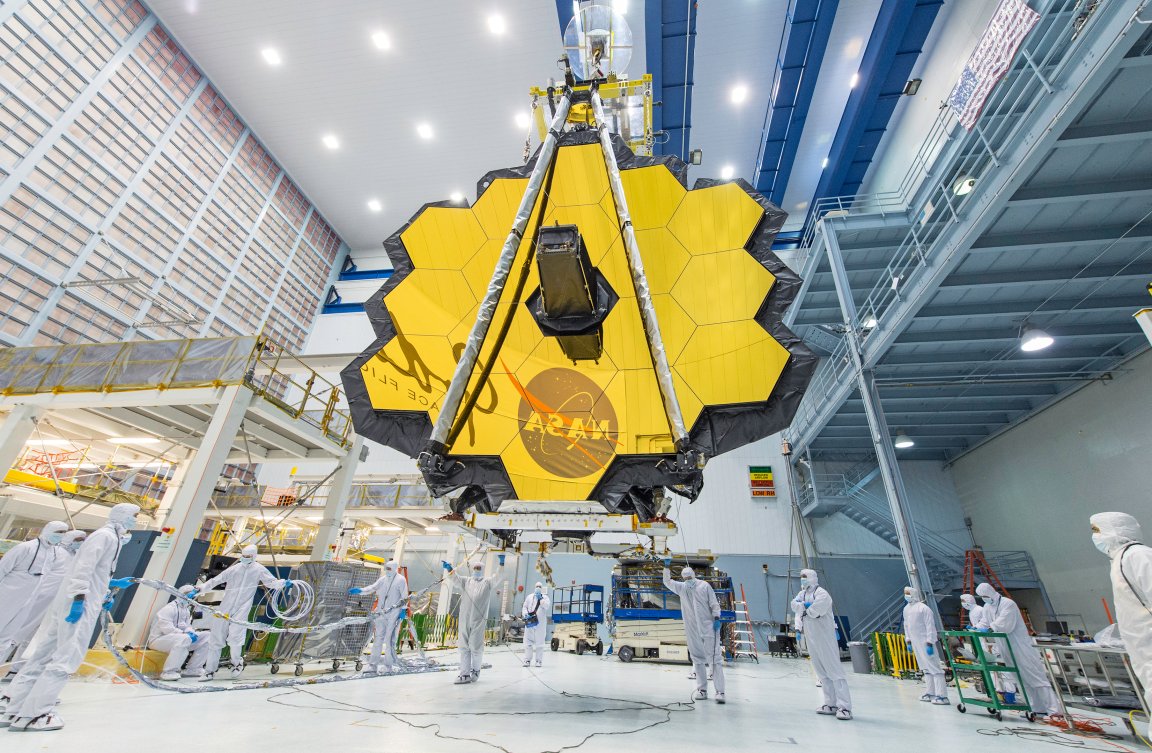
Telescope Testing
In 2017, the James Webb Space Telescope (JWST) successfully completed cryogenic vacuum testing that lasted for over 100 days, solidifying the instrument’s capabilities and potential as a full observatory. In a NASA media briefing on January 10, officials at the Johnson Space Center in Houston discussed these efforts and the magnitude of this successful testing. The “world’s largest space freezer,” as described by Mark Voyton, Webb telescope Optical Telescope Element and Integrated Science Instrument Module (OTIS) manager at Goddard, allowed the team to successfully test the instrument and its pieces at the extreme temperatures it will endure in its missions.
Additionally, this testing showed that all mirrors and instrument models were aligned, with the primary mirror’s 18 segments all operating as one monolithic mirror. The tests also allowed NASA to exercise operations as they would occur in orbit, confirm that the integrated fine guiding system can track a star through the optical system, and ensure that the telescope could maintain correct observatory pointing. This laundry list of successful testing puts the JWST right on schedule to move forward and open our eyes to previously unseen corners of the universe.

The Webb testing was completed in Chamber A, a thermal-vacuum test facility that was first made famous in testing the Apollo spacecraft. While the Apollo tests were completed with both extreme heat and cold in mind, the chamber was heavily modified for the JWST. The Apollo craft were tested at temperatures as low as 100 Kelvin, but with these modifications, testing commenced at temperatures as low as 40 Kelvin with no high-temperature testing.
The success of this testing is not only a significant milestone for the James Webb Space Telescope and its highly-anticipated 2019 launch; it’s also a testament to the human spirit. This cryogenic testing occurred 24/7 throughout Hurricane Harvey, uninterrupted, as its international teams worked together in a collaborative effort.
Moving Forward
After the success of this testing, the JWST will be transported for integration into a complete observatory and to undergo final environmental testing before traveling to its launch site. While there was a delay that pushed the launch from 2018 to 2019, the telescope is currently right on track to successfully make its launch window.

The capabilities of the JWST will far surpass anything that has been created before. This mammoth telescope, described by Voyton as “the world’s most magnificent time machine,” proved a piece of this capability in testing: it detected, with all four instruments, the light of a simulated star for the first time. The fine guidance subsystem was successful in not only generating the position of the light, but also in tracking its movement. This was a first in testing, and it shows the remarkable applications that this telescope will have.
Because it is an infrared telescope, as opposed to a visual light telescope like Hubble, the James Webb Space Telescope requires a cold environment such as the one it was tested in. This will allow it to observe light from some of the earliest moments of the universe. Additionally, it will give us clarity in viewing exoplanets that we’ve only before dreamed of, closely observing Earth-like planets that could hold the promise of solidifying the existence of extraterrestrial life.
It hasn’t even left Earth yet, but this phenomenal instrument continues to inspire.